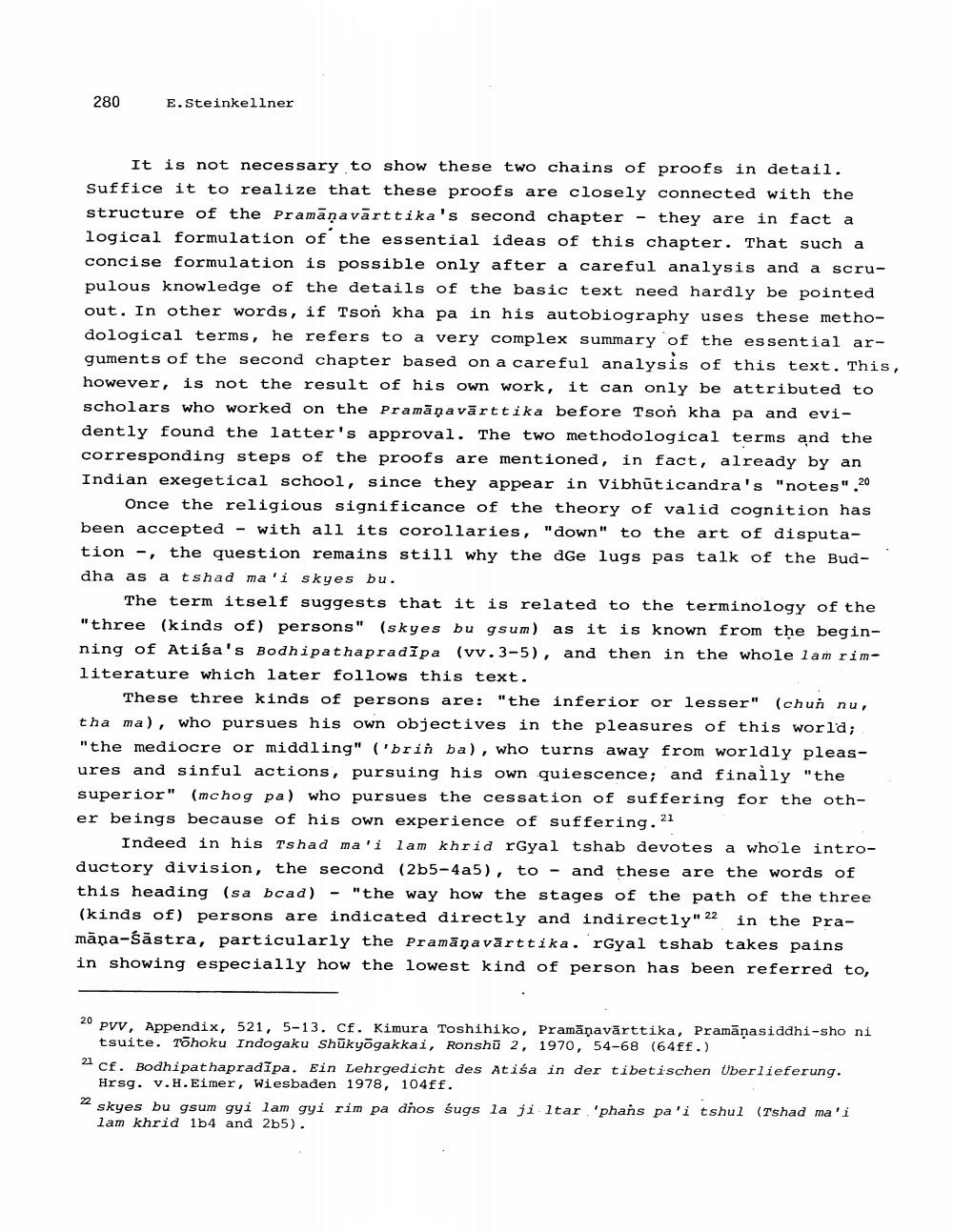Book Title: Meaning And Historical Significance Of Term Author(s): Ernst Steinkellner Publisher: Ernst Steinkellner View full book textPage 6
________________ 280 E.Steinkellner It is not necessary to show these two chains of proofs in detail. Suffice it to realize that these proofs are closely connected with the structure of the Pramāņavārttika's second chapter - they are in fact a logical formulation of the essential ideas of this chapter. That such a concise formulation is possible only after a careful analysis and a scrupulous knowledge of the details of the basic text need hardly be pointed out. In other words, if Tson kha pa in his autobiography uses these methodological terms, he refers to a very complex summary of the essential arguments of the second chapter based on a careful analysis of this text. This, however, is not the result of his own work, it can only be attributed to scholars who worked on the Pramāņavārttika before Tson kha pa and evidently found the latter's approval. The two methodological terms and the corresponding steps of the proofs are mentioned, in fact, already by an Indian exegetical school, since they appear in Vibhūticandra's "notes".20 Once the religious significance of the theory of valid cognition has been accepted - with all its corollaries, "down" to the art of disputation-, the question remains still why the dGe lugs pas talk of the Buddha as a tshad ma'i skyes bu. The term itself suggests that it is related to the terminology of the "three (kinds of persons" (skyes bu gsum) as it is known from the beginning of Atiśa's Bodhipathapradīpa (vv. 3-5), and then in the whole lam rimliterature which later follows this text. These three kinds of persons are: "the inferior or lesser" (chun nu, tha ma), who pursues his own objectives in the pleasures of this world; "the mediocre or middling" ('brin ba), who turns away from worldly pleasures and sinful actions, pursuing his own quiescence; and finally "the superior" (mchog pa) who pursues the cessation of suffering for the other beings because of his own experience of suffering. 21 Indeed in his Tshad ma'i lam khrid rGyal tshab devotes a whole introductory division, the second (2b5-4a5), to - and these are the words of this heading (sa bcad) - "the way how the stages of the path of the three (kinds of persons are indicated directly and indirectly" 22 in the Pramāna-śāstra, particularly the Pramāņavārttika. 'rGyal tshab takes pains in showing especially how the lowest kind of person has been referred to, 20 PVV, Appendix, 521, 5-13. Cf. Kimura Toshihiko, Pramāņavārttika, Pramāṇasiddhi-sho ni tsuite. Tohoku Indogaku Shūkyōgakkai, Ronshū 2, 1970, 54-68 (64ff.) 21 cf. Bodhipathapradipa. Ein Lehrgedicht des Atiśa in der tibetischen Uberlieferung. Hrsg. V.H.Eimer, Wiesbaden 1978, 104ff. 2 skyes bu gsum gyi lam gyi rim pa dños śugs la ji Itar 'phans pa'i tshul (Tshad ma'i lam khrid 1b4 and 2b5).Page Navigation
1 ... 4 5 6 7 8 9 10 11
